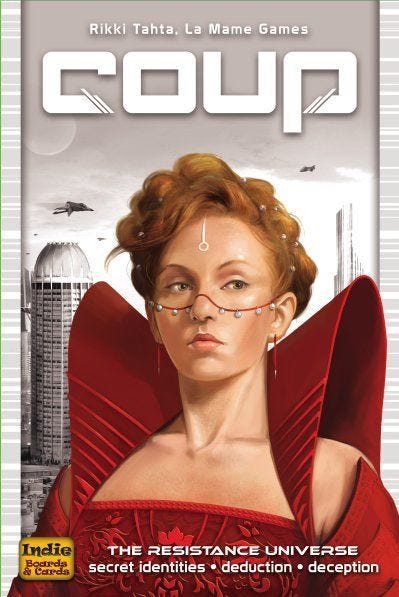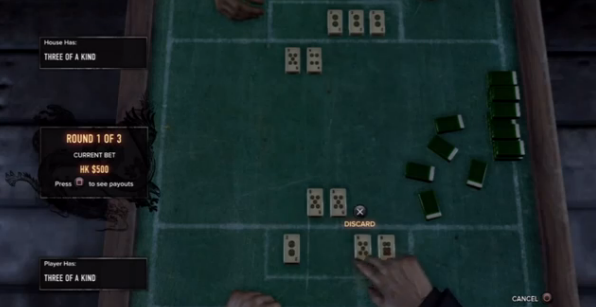Poker 1v1 Strategy
We talked to experts about the best two-player board games including Patchwork, Codenames: Duet - The Two Player Word Deduction Game, Twilight Struggle Deluxe Edition, Hive: A Game Crawling With. Quin is a quantum burst of new gameplay mechanics and fast, unpredictable moves. This is sci-fi in a 1v1 setting, where your tactics are only as good as your poker face. Snap your pieces to the magnetic game board and keep them hidden from your rival as you advance on center. The average game runs about 15 minutes, so Quin is perfect for break rooms and classrooms, but the epic replayability.
It’s a weekend and you and a friend or family member are wondering if you can play a game of poker with just the 2 of you. I have been playing for over 10 years and can give you a definitive answer.
Can you play poker with 2 players? Poker can be played with only two players. It is called heads-up. Here are the two player rules:
- The dealer is the small blind and the other player posts the big blind. Players take turns being the dealer.
- The first card is dealt
to the player in the big blind. - The Dealer goes first before the flop and the Big Blind goes first after the flop.
Let’s cover a few more common questions that players typically have about 2 player poker in greater detail.
What Are the 2 Player Poker Rules?
Now that you are set up to play, let’s cover how to play 2 player poker. Here are the basic rules that you will need to know in order to play your game.

You may want to keep this page open in your browser in case questions come up during play.
1. How do the blinds work in 2 player poker?
How the blinds work is probably the most confusing thing in heads-up poker. However, once you get the hang of it it’s not that difficult to remember since there are only a couple of differences between 6-max or full-ring rules.
Who Is the Big Blind Who Is the Small Blind in Heads-Up Poker?
Poker 1v1 Strategy Tactics
This is the most common question I get about 2 player poker
How Do We Determine Who Gets the Button First at the Start of the Game?
The easiest and most fair way to determine who gets to be dealer first is for each player to draw a card from the deck. The high card gets to deal first.
2. How Are the Cards Dealt in 2 Player Poker?
Which Blind Gets Dealt to First Before the Flop?
The big blind gets the first card and the dealer gets the second card in heads-up play. The easy way to remember this is that the dealer never deals to his or her self first.
Can the Same Person Deal Every Hand?
It’s true that sometimes one person is better at dealing. In this case, it’s okay for the same person to
Just make sure that you move the dealer button each hand. It would be highly unfair if the same person had to play the big blind every single hand!
3. Who Goes First When Only Two Players Are Playing?
I remember walking up to observe the heads-up match between two friends in pub poker. I quickly realized that they were following the opposite order of play that they were supposed to.
I did not want to embarrass them so I kept quiet. It was apparent everyone else didn’t want to as well since none of the 10-15 observers said anything!
Who Goes First Before the Flop?
Pre-flop, the dealer always acts first in 2 player poker.
This rule is exactly the same as pre-flop however, it is easy to get wrong for inexperienced players. The easy way to remember it is that the big blind player acts last before the flop in 6 or 9-handed games, and it makes
Who Goes First After the Flop in Heads-Up?
This rule is also exactly the same for normal poker games. The dealer gets to always go last on the flop.
The biggest perk of playing on the dealer button is that you get to act last and have more information than your opponents. This is especially powerful in heads-up since the big blind can never act last.
What If the Dealer Open Folds in 2 Player Games?
When the Dealer decides to not play his or her hand before the flop, the small blind is relinquished to the player in the big blind. The dealer button then moves and the next hand begins.
Is it better to play Heads-Up, Cash Games or Tournaments?
Deciding what format to play in 2 player poker all comes down to personal preference. Each type of game has its perks.
Why Play Heads-up Cash Games?
There are a couple of reasons people might choose cash games over tournaments:
- Blinds Do Not Rise – Perhaps the biggest benefit of 2 person cash games is that you don’t have to worry about the blinds going up like they do in tournaments. You don’t need a special tournament clock, you can just choose your stake level and play indefinitely without having to adjust your style to the rising blinds.
- You Don’t Need Poker Chips – In tournaments, you really need to use poker chips that you can “color up” as the game goes on. That means to add higher value chips to compensate for the bigger stakes. Instead, you can use real coins or even paper money to play cash games.
- Cash Games Take More Skill – If you really want to practice and improve at poker, then the best way is through cash games. Once the blinds rise in tournaments, the game becomes more and more about who is the luckiest person.
Why Play Heads-up Tournaments?
Even though I am a cash game specialist, when I play heads-up I actually prefer tournaments. Here is why:
- There Are Logical End Points – While cash games drag on and on, a tournament always ends up with one person having all the chips. You can then decide whether to start anew or call it a night. So, if you want to play best of 3 or best of 5, you have a better idea of when the night will end and can plan for it. For this reason, it’s also a great format for hosting a home poker tournament with multiple players.
- Tournaments Tend to Be Much More Exciting – There’s nothing more fun in poker than getting to the shove-fold phase of a tournament or sit and go. Chips change hands rapidly and anyone can win at that point. Who doesn’t love a race for all the chips?
- The Games Are Usually More Fun for Beginners – Many people that get into poker are used to watching the World Poker Tour or the World Series of Poker. Therefore, tournaments are what they are familiar with and likely to understand better.
If you don’t have poker chips, there are likely plenty of poker chip substitutes lying around the house or office.
A Fun Alternative Format: Play Short-Stacked Cash Games
Another idea is to mix both a tournament and cash game feel by playing short stacked cash games
The way it works is that each player starts with 20, 30, or 40 big blinds and then play cash games. The blinds do not rise, but there is still plenty of heavy pre-flop action with lots of reraise shoving
Post-flop also plays a lot easier as a short stack. Top pair is an easy hand to get all-in with when short whereas it can be difficult to play when deed-stacked.
What Is the Best 2 Player Poker Strategy?
The biggest adjustment when playing heads-up poker is that marginal hands go way up in value. 3rd pair or even high card Ace can often win at showdown.
So, loosen up and don’t let your opponent run you over if he or she bets a lot! Conversely, you should bet often when you have any piece of the board or a credible bluff. There is a good chance your opponent might fold a better hand or pay you off with a worse hand.
What 2 Player Games Can We Play Besides Texas Hold’Em?
If you are tired of heads-up No-Limit Hold’em and want to mix in another game occasionally, there are several good options:
- Pot Limit Omaha: In PLO, the heads-up rules are exactly the same as Hold’em except that both players get four hold cards. You also have to use both cards at showdown. Having one Diamond in your hand does not make a flush on a four Diamond board in PLO.
- 5-Card Draw: This is the traditional “old-fashioned” game that most people used to learn poker before No-Limit Hold-em became the dominant game. Both players have a designated ante that they pay before the cards are dealt. Then, you simply deal out 5 cards to each heads-up player. Instead of having a flop, turn, and
river there is instead two betting rounds. Once when you get your initial cards and then after adiscard round. You may discard up to 3 cards (4 if you have an Ace) and get those cards replaced by the dealer. There is then another betting round and then the cards are shown and a dealer determined. You can, of course, fold any time during the hand and only lose the money you have invested up to that point. - 7-Card Stud: This game is similar to draw except that you start with two cards down and one card up. There is then a betting round.
Afterward , another card is turned up one by one with a betting round happening in between. Once both heads-up players each have 7 cards, the dealing is complete and showdown can be reached.
Accessories to Make Matches Even Better
If you want to make your games more classy, then I recommend picking up quality accessories. I wrote recommendation articles for each category, just click the links to learn more:
Poker 1v1 Strategy Games
- Playing Cards– My personal favorite is Copag, what’s yours?
- Poker Chips– I prefer a higher-end set, but there are plenty of good budget poker chip sets available as well.
- Poker Table– I like roll up poker table mats for ease of storage, but that’s just me.
Final Thoughts
Playing heads-up only happens in tournaments if you are the last two players left in the field. However, 2 player poker is something you can do for fun either as a cash game or tournament at home.
If you want to read more about heads-up poker, I wrote a detailed article on the heads-up poker rules for Texas Hold’em. Thanks for stopping by!
Related Questions
Do you have to use both cards in Hold’em? In order to make your best 5-card hand in Hold’em, you can either use both cards or just one.
Is Ace high or low in poker? In Poker, an Ace can usually either be the highest card or the lowest. It can make the highest straight of TJQKA and the lowest straight, often called the wheel, of A2345.
Do you have to match the big blind is poker? In order to qualify to see the flop, you must at least match the amount of the blind.
Basic Strategy:Tips : Position : Starting Hands : Bluffing : Betting : Money Management
It's all well and good knowing when to bet and raise, but if you don't know how much money you should be betting and raising when the action is on you, then there is a pretty big hole in your game.
Use this quick and easy guide to find out how big your bets should be for the next time you sit down at a no limit Texas Hold'em table.

Why is it important to size your bets properly?
Lets say that you hold a strong hand like top pair on the flop, but there are also two cards of the same suit on the board. Like this...
If you bet too little, you are giving players with drawing hands or hands like middle pair the opportunity to see a cheap turn card, which makes it mathematically correct for them to call to try and beat your hand (as they will have good pot odds - but don't worry about this if you are not familiar with pot odds (playing flush and straight draws) yet, just take it as betting too little is bad). So by not betting enough, you are simply allowing other players to catch up and take the pot away from you.
If you bet too much, you are risking a lot of money for the times when an opponent has a better hand than you. Top pair is a good hand on the flop, and a big bet will get rid of those weaker hands that are trying to outdraw you, but what happens if another player already has you beat? You will have committed a lot of money to the pot when a smaller bet would have done the same job but saved you money.
So as you can guess, we are going to be shooting for the 'sweet spot' in terms of bet sizes. This is going to be where we bet enough to make it mathematically incorrect for players on draws to call, but at the same time not betting so much that it means we lose too much money if we come up against resistance. So lets get to it...
How to size your bets in no limit Texas Hold'em.

Allow me to give you a fundamental yet very awesome rule about good poker betting strategy:
The size of your bets should always be made relative to the size of the pot.
This just means that whenever you make a bet, you take into consideration the size of the pot and bet according to how big or small the pot is. But again, this is all well and good, but it doesn't tell you how big your bets should be. So let me give you one more magical rule that you should always try and follow when it comes to bet sizing.
If you have a strong hand that you wish to bet with, you should make your bets between 75% - 100% of the size of the pot.
By following this rule, you will always be able to work out the optimum range of bet sizes to make at any stage of any hand. By betting between these two figures, you will be betting enough to force opponents on a draw to fold, but not risking so much that it makes it detrimental if one of the other players at the table has you beat. It's a simple rule I know, but it will take you a long way.
Betting before the flop.
I'll mention this again in the article on playing before the flop, but as a general rule of thumb, you want to make your preflop raises around 4 times the size of the big blind.
You have a good hand, so you want to play for good money with it.
If you find that there are any limpers before you, then add 1 big blind on top of the 4 big blind raise. So if you are playing $1/$2 NL Hold'em and you have decided that you want to make a preflop raise, then the standard raise would be $8. However, if there has been 1 limper, then make it $10. If there has been two limpers, make it $12 and so on...
This is because limpers make the pot bigger, which will mean that even if you make a standard 4X BB raise, your opponents will be getting a better price to make the call to see a flop. So make sure you put them to a tougher decision... you want bad players to make a costly mistake by paying a lot to enter the pot with a lame hand.
You're not trying to guarantee winning to pot with a big raise. The benefit of it is getting in to a bigger-money pot with an edge, and that edge is having stronger cards than your opponents. It's good when they call with terrible hands.
With high cards like AK and AQ, the ideal situation is to be heads-up (1v1) on the flop. The more players in the pot with a hand like AK, the trickier it gets. Good preflop betting strategy increases the chances of you playing heads up.
:max_bytes(150000):strip_icc()/close-up-of-poker-player-s-hands-157418183-5c42653146e0fb00010f505c.jpg)
Poker betting strategy overview.
That's essentially the meat and bones of bet sizing in Texas Hold'em for you. You can perfect it in your own time through practice, but if you stick with the 75% - 100% rule and the 4BB rule for before the flop, you are well on your way to becoming a force to be reckoned with at the poker table.
The bet sizing may seem a bit bigger than you might normally be used to, but trust me on this one, this is how a winning poker player bets. It may seem a little scary at first, but you will get used to it after you start to get your feet wet. You also won't mind it as much when you find that you have a much more commanding role over the pots that you play, so get back out there and start betting like a champ.
Go back to the sublime Texas Hold'em guide.
Can You Afford Not To Use
Poker Tracker 4?
“I wouldn’t play another session of online poker without it”
“I play $25NL, and in under 1 week PT4 had paid for itself”
Comments